Planning worship?
Check out our sister site, ZeteoSearch.org,
for 20+ additional resources related to your search.
- |
User Links
Person Results
‹ Return to hymnal

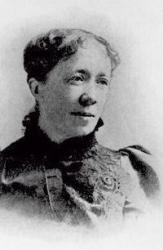
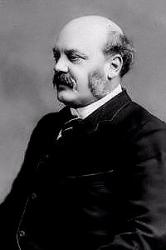
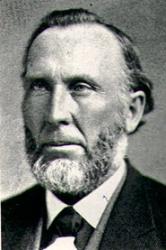
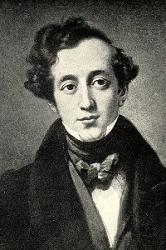

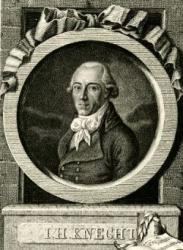
Export as CSV
E. Prentiss

1818 - 1878 Person Name: Elizabeth Prentiss Hymnal Number: 379 Author of "More Love to Thee" in The Modern Hymnal Elizabeth Payson Prentiss USA 1818-1878. Born at Portland, ME, 5th child of Congregationalist minister, Edward Payson. He died of tuberculosis in 1827, and the family moved to New York City in 1831. That year she professed faith in Christ and joined the Bleeker Street Presbyterian Church. She possessed keen abilities, including sympathy and perceptiveness. She began writing stories and poems, and contributed her works to “The youth’s companion”, a New England religious periodical. In 1838 she opened a small girls’ school in her home and took up a Sabbath-school class as well. Two years later, she moved to Richmond, VA, to be a department head at a girls’ boarding school. In 1845 she married George Lewis Prentiss, a brother of her close friend, Anna Prentiss Stearns. The Prentisses settled in New Bedford, MA, where George became pastor of South Trinitarian Church. In 1851 George became pastor of Mercer St Presbyterian Church in New York City. After a happy period in life, by 1852 she had lost two of her three children, one as a newborn, one at age four. However, she went on to have three more healthy children, despite her poor health. She wrote her first book of stories, published in 1853. In 1856 she penned her famous hymn lyrics (noted below) after she nearly lost her daughter, Minnie, to an illness. After George resigned from his church due to failing health, the family went abroad for a couple of years. In 1860 they returned to NY, where George resumed his pastorate and held a chair at Union Theological Seminary. She published her most popular book, “Stepping heavenward” in 1869, furnishing it in installments to ‘Chicago Advance’. The family evenually settled in Dorset, VT, where she died. After her death, her husband published “The life and letters of Elizabeth Prentiss” in 1882. The family children were: Annie, Eddy, Bessie, Minnie, George, and Henry.
John Perry
================
Prentiss, Elizabeth, née Payson, youngest daughter of Dr. Edward Payson, was born at Portland, Maine, Oct. 26, 1818; married to George Lewis Prentiss, D.D., then at Bedford, Massachusetts, April, 1845; and died at Dorset, Vermont, Aug. 13, 1878. Her Life and Letters by her husband appeared some time after. Dr. Prentiss removed from Bedford to New York in 1851, and was appointed Professor of Pastoral Theology at Union Seminary, New York, 1873. Mrs. Prentiss's works include The Flower of the Family; Stepping Heavenward, 1869; and Religious Poems, 1873. Of her hymns the two following are most widely known:—
1. As on a vast eternal shore Thanksgiving. Contributed to Schaff's Christ in Song, 1869.
2. More love to Thee, 0 Christ. More Love to Christ desired. Written in 1869, and first printed on a fly-sheet; then in Hatfield's Church Hymn Book, N. Y., 1872.
[Rev. F. M. Bird, M.A.]
--John Julian, Dictionary of Hymnology (1907)
E. Prentiss
Mary Brown
1856 - 1918 Hymnal Number: 330 Author of "I'll Go Where You Want Me to Go" in The Modern Hymnal From the Norwich Bulletin, Norwich, Connecticut, January 23, 1918:
The death of Miss Mary M. Brown at Backus Hospital Tuesday morning saddened a host of friends and the different pupils who have had the benefit of her instruction for so many years. Miss Brown was born in Natick, R. I., May 19, 1856. She was the daughter of Lydia A. Higgins and Joseph R. C. Brown. Her common and high school education was received in Rockport, Mass. At the time there was a normal school in Norwich over twenty years ago, she took the course there and was graduated, after which she taught in the Model School in Norwich.
Miss Brown has taught in the Jewett City schools for twenty years. A teacher more faithful to the interests of the scholars and school cannot be found. Her interest in the welfare of her pupils did not cease after they went out from under her care. Her everready pen in poetical compositions for occasions of various kinds was in great demand and the verses were always of a beautiful sentiment, expressed in the best of language. The words for the Christian Endeavor Consecration hymn, "I'll Go Where You Want Me to Go" known and sung wherever sacred music is used, where written by Miss Brown. Her artistic ability was developed in many lines.
She was a woman unusually gifted with literary talent. Miss Brown was a member of the Baptist Church. She was one of the original ten members forming Whatsoever Circle of The King's Daughters and has served as its leader. She was a member of the Ladies' Aid Society and Mission Circle, and had been a teacher in the Sunday school.
A woman faithful in many things has gone to her reward. She is survived by a sister, Mrs. Nettie Johnson of Jewett City, a brother, E. Frank Brown of Woonsocket, R. I., and niece, Miss Marion H. Johnson of Willimantic.
--Submitted to Leonard Ellinwood by Lillian Cathcart, local historian of Norwich, Connecticut. DNAH Archives
Excerpt from letter from Julia Bair to Leonard Ellinwood, 22 August 1977:
I just talked with Mrs. Samuel Cathcart, our local historian, about Mary Brown. She did live in Jewett City in the late 1800's and wrote that hymn around 1890 as you indicated. However, someone changed one word in her original poem and had it copyrighted. She was never known as Charles Gabriel. She was a teacher here in Jewett City and I talked yesterday with one of her pupils! The music of this hymn (Mary Brown's original) was written by an officer in the Jewett City Savings Bank at that time.
--DNAH Archives
Mary Brown
W. P. Mackay
1839 - 1885 Person Name: Wm. P. Mackay Hymnal Number: 108 Author of "Revive Us Again" in The Modern Hymnal Mackay, William Paton, M.D., was born at Montrose, May 13, 1839, and educated at the University of Edinburgh. After following his medical profession for a time, he became minister of Prospect Street Presbyterian Church, Hull, in 1868, and died from an accident, at Portree, Aug. 22, 1885. Seventeen of his hymns are in W. Reid's Praise Book, 1872. Of these the best known is "We praise Thee, O God, for the Son of Thy love" (Praise to God), written 1863, recast 1867. [Rev. James Mearns, M.A.]
--John Julian, Dictionary of Hymnology, Appendix II (1907)
======================
Born: May 13, 1839, Montrose, Scotland.
Died: August 22, 1885, Portree, Scotland, of an accident.
Mackay graduated from the University of Edinburgh and initially worked as a doctor. However, he was ordained, and in 1868 became pastor of the Prospect Street Presbyterian Church in Hull. He married Mary Loughton Livingstone 1868 in Kingston Upon Hull, Yorkshire; they were living in Sculcoates, Yorkshire, as of 1881. Seventeen of his hymns appeared in W. Reid’s Praise Book in 1872.
Sources:
Hustad, p. 278
Julian, p. 1667
Reynolds, p. 365
http://www.hymntime.com/tch/bio/m/a/c/mackay_wp.htm
W. P. Mackay
Mary A. Lathbury

1841 - 1913 Hymnal Number: 39 Author of "Day is Dying in the West" in The Modern Hymnal Lathbury, Mary Ann, was born in Manchester, Ontario County, New York, Aug. 10, 1841. Miss Lathbury writes somewhat extensively for the American religious periodical press, and is well and favourably known (see the Century Magazine, Jan., 1885, p. 342). Of her hymns which have come into common use we have:—
1. Break Thou the bread of life. Communion with God. A "Study Song" for the Chautauqua Literary and Scientific Circle, written in the summer of 1880. It is in Horder's (Eng.) Congregational Hymns, 1884.
2. Day is dying in the west. Evening. "Written at the request of the Rev. John H. Vincent, D.D., in the summer of 1880. It was a "Vesper Song," and has been frequently used in the responsive services of the Chautauqua Literary and Scientific Circle." It is in the Laudes Domini, N. Y., 1884.
For these details we are indebted to S. W. Duffield's English Hymns, &c, N. Y., 1886.
--John Julian, Dictionary of Hymnology (1907)
==================
Lathbury, Mary A., p. 640, i. Another hymn by this writer is, "Lift up, lift up thy voice with singing." [Praise to Christ), in Sankey's Sacred Songs & Solos, 1878.
--John Julian, Dictionary of Hymnology, Appendix, Part II (1907)
Mary A. Lathbury
A. L. Peace

1844 - 1912 Hymnal Number: 439 Composer of "MARGARET" in The Modern Hymnal Albert Lister Peace DMus United Kingdom 1844-1912. Born at Huddersfield, Yorkshire, England, son of a warehouseman and woolstapler, he was extremely gifted as a musician, largely self-taught, playing the organ at Holmfirth Parish Church near Huddersfield at age nine. He married Margaret Martin Steel Gilchrist, and they had three children: Lister, Archibald, and Margaret. In 1865 he was appointed organist of Trinity Congregational Church in Glasgow, Scotland. He obtained his doctorate degree from the University of Oxford in 1875. He became organist at Glasgow Cathedral in 1879. In 1897 he succeeded William Best as organist at St George’s Hall, Liverpool. In later years he was in much demand to play the organ in recitals. He did so at Canterbury Cathedral (1886), Victoria Hall, Hanley, Stoke-on-Trent (1888), and Newcastle Cathedral (1891). He composed orchestrations, sonatas, cantatas, and concert and church service anthems. He was an arranger, author, and editor. He died at Blundelsands, Liverpool, England.
John Perry
A. L. Peace
William T. Sleeper

1819 - 1904 Person Name: W. T. Sleeper Hymnal Number: 28 Author of "Jesus, I Come" in The Modern Hymnal Sleeper, W. T. is given in I. D. Sankey’s Sacred Songs & Solos, 1881, as the author of “A ruler once came to Jesus by night” (Need for the New Birth).
--John Julian, Dictionary of Hymnology, Appendix, Part II (1907)
===============
William T. Sleeper (1819-1904)]
Born: February 9, 1819, Danbury, New Hampshire.
Died: September 24, 1904, Wellesley, Massachusetts.
Sleeper attended Phillips-Exeter Academy, the University of Vermont, and the Andover Theological Seminary. After ordination, he conducted home ministry work in Massachusetts and Maine. He later became pastor of the Summer Street Congregational Church in Worcester, Massachusetts, where he served over 30 years. His works include:
The Rejected King, and Hymns of Jesus, 1883.
-- www.hymntime.com
William T. Sleeper
William D. Longstaff
1822 - 1894 Person Name: W. D. Longstaff Hymnal Number: 148 Author of "Take Time to be Holy" in The Modern Hymnal William Dunn Longstaff United Kingdom 1822-1894. Born at Sunderland, Durham, England, the son of a wealthy ship owner, he was a person of independent financial means. Although Longstaff had everything he desired, he still had an empty feeling in his life, and attended church one day and was inspired by words of a China missionary, Griffith John, on furlough to England, preaching at a service in Keswick, England, citing I Peter 1:16, “Be ye holy, for I am holy”. That resulted in him giving his heart to the Lord and beginning a Christian life, dedicated to God. He became a generous philanthropist and was influential in evangelical circles. Following his friend, Rev Arthur A Rees, a persuasive Welsh preacher, who left the Anglican priesthood after disagreements with his rector and bishop, Dunn served as church treasurer for Ree’s Bethesda Free Chapel in Sunderland. He married Joice Burlinson in 1853 and they had eight children: William, Hannah, Rhoda, Amelia, Ernest, Nora, Marnia, and Minnie. Longstaff befriended well-known evangelists, including William Booth of the Salvation Army, to whose work he generously contributed. Some of Langstaff’s hymns were published in the Salvation Army magazine, “The War Cry” during the 1880s. He also financed Dwight Moody’s evangelical crusades in England and Scotland when Moody’s funding dried up after their financier died. During the crusade they preached to 20,000 people. Longstaff did not forget that first sermon he heard, and it prompted the writing of his hymn lyrics, which he later showed to Ira Sankey during their crusade. Sankey showed it to George Stebbins, who set it to music in 1882 during a revival in India. In 1881 Longstaff’s wife died. He died at Sunderland, England.
John Perry
William D. Longstaff
Felix Mendelssohn-Bartholdy

1809 - 1847 Person Name: F. Mendelssohn Hymnal Number: 134 Composer of "RAYNOLDS" in The Modern Hymnal Felix Mendelssohn-Bartholdy (b. Hamburg, Germany, 1809; d. Leipzig, Germany, 1847) was the son of banker Abraham Mendelssohn and the grandson of philosopher Moses Mendelssohn. His Jewish family became Christian and took the Bartholdy name (name of the estate of Mendelssohn's uncle) when baptized into the Lutheran church. The children all received an excellent musical education. Mendelssohn had his first public performance at the age of nine and by the age of sixteen had written several symphonies. Profoundly influenced by J. S. Bach's music, he conducted a performance of the St. Matthew Passion in 1829 (at age 20!) – the first performance since Bach's death, thus reintroducing Bach to the world. Mendelssohn organized the Domchor in Berlin and founded the Leipzig Conservatory of Music in 1843. Traveling widely, he not only became familiar with various styles of music but also became well known himself in countries other than Germany, especially in England. He left a rich treasury of music: organ and piano works, overtures and incidental music, oratorios (including St. Paul or Elijah and choral works, and symphonies. He harmonized a number of hymn tunes himself, but hymnbook editors also arranged some of his other tunes into hymn tunes.
Bert Polman
Felix Mendelssohn-Bartholdy
Horatio Gates Spafford

1828 - 1888 Person Name: H. G. Spafford Hymnal Number: 18 Author of "It Is Well With My Soul" in The Modern Hymnal
Horatio Gates Spafford
Justin Heinrich Knecht

1752 - 1817 Person Name: Justin H. Knecht Hymnal Number: 101 Composer of "ST. HILDA" in The Modern Hymnal Justin Heinrich Knecht Germany 1752-1817. Born at Biberach Baden-Wurttemberg, Germany, he attended a Lutheran college in Esslingen am Neckar from 1768-1771. Having learned the organ, keyboard, violin and oratory, he became a Lutheran preceptor (professor of literature) and music director in Biberach. It was a free imperial city until 1803 and had a rich cultural life. He became organist of St. Martin’s Church in 1792, used by both Lutherans and Catholics, and was there for many years. He led an energetic, busy musical life, composing for both the theatre and church, organizing subscription concerts, teaching music theory, acoustics, aesthetics, composition, and instruments at the Gymnasium, affiliated to the Musikschule in 1806. He went to Stuttgart in 1806 in hopes of a post there as Kapellmeister, serving two years as Konzertmeister, but he was appointed Direktor Beim Orchester by the King of Wurttemberg in 1807. However, he returned to his former life in 1808 and remained there the rest of his life. He died at Biberach. He wrote 10 vocals, 11 opera and stage works, one symphony, 3 chamber music instrumentals, 7 organ works, 4 piano works, and 6 music theories. He was an author composer, editor, contributor, musician, compiler, and lyricist.
John Perry
Justin Heinrich Knecht


 My Starred Hymns
My Starred Hymns

